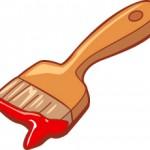Children are exposed to lead from different sources including paint, gasoline, solder, and some consumer products. They come in contact through different pathways including air, food, water, dust, and soil.
 Although there are several exposure sources, the one we all know the most about is lead-based paint. It is the most widespread and dangerous high-dose source of lead exposure for young children and pregnant women and their unborn children.
Although there are several exposure sources, the one we all know the most about is lead-based paint. It is the most widespread and dangerous high-dose source of lead exposure for young children and pregnant women and their unborn children.
Other sources the CDC warns about include:
The potential for children to be exposed to lead from candy imported from Mexico has prompted the U.S. Food and Drug Administration (FDA) to issue warnings on the availability of lead-contaminated candy and to develop tighter guidelines for manufacturers, importers, and distributors of imported candy. Lead has been found in some consumer candies imported from Mexico. You cannot tell by looking at or tasting a candy whether it contains lead. Consuming even small amounts of lead can be harmful. There is no safe blood lead level. Lead poisoning from candies can cause illness. Lead has been found in some traditional (folk) medicines used by East Indian, Indian, Middle Eastern, West Asian, and Hispanic cultures. Traditional medicines can contain herbs, minerals, metals, or animal products. Lead and other heavy metals are put into certain folk medicines on purpose because these metals are thought to be useful in treating some ailments. People selling a remedy may not know whether it contains lead. You cannot tell by looking at or tasting a medicine whether it contains lead. Lead poisoning from folk remedies can cause illness, even death. If swallowed or put in the mouth, lead jewelry is hazardous to children. The potential for children to be exposed to lead from this source caused the U.S. Consumer Product Safety Commission (CPSC) to issue on July 8, 2004, a recall of 150 million pieces of metal toy jewelry sold widely in vending machines. Lead may be used in two aspects of toy manufacturing on toys.Lead is invisible to the naked eye and has no smell. Children may be exposed to it from consumer products through normal hand-to-mouth activity, which is part of their normal development. They often place toys, fingers, and other objects in their mouth, exposing themselves to lead paint or dust.
 Measures taken during the last two decades have greatly reduced exposures to lead in tap water. These measures include actions taken under the requirements of the 1986 and 1996 amendments to the Safe Drinking Water Act (http://www.epa.gov/safewater/sdwa/index.html
Measures taken during the last two decades have greatly reduced exposures to lead in tap water. These measures include actions taken under the requirements of the 1986 and 1996 amendments to the Safe Drinking Water Act (http://www.epa.gov/safewater/sdwa/index.html ) and the EPA's Lead and Copper Rule (http://www.epa.gov/safewater/lcrmr/index.html
) and the EPA's Lead and Copper Rule (http://www.epa.gov/safewater/lcrmr/index.html ). Even so, lead still can be found in some metal water taps, interior water pipes, or pipes connecting a house to the main water pipe in the street. Lead found in tap water usually comes from the corrosion of older fixtures or from the solder that connects pipes. When water sits in leaded pipes for several hours, lead can leach into the water supply. The only way to know whether your tap water contains lead is to have it tested. You cannot see, taste, or smell lead in drinking water. Therefore, you must ask your water provider whether your water has lead in it. For homes served by public water systems, data on lead in tap water may be available on the Internet from your local water authority. If your water provider does not post this information, you need to call and find out.
). Even so, lead still can be found in some metal water taps, interior water pipes, or pipes connecting a house to the main water pipe in the street. Lead found in tap water usually comes from the corrosion of older fixtures or from the solder that connects pipes. When water sits in leaded pipes for several hours, lead can leach into the water supply. The only way to know whether your tap water contains lead is to have it tested. You cannot see, taste, or smell lead in drinking water. Therefore, you must ask your water provider whether your water has lead in it. For homes served by public water systems, data on lead in tap water may be available on the Internet from your local water authority. If your water provider does not post this information, you need to call and find out. The CDC recommends that children under six and pregnant women living in older homes that may, at one time been painted with lead-based paint, not be present when renovations and repairs are done to their homes. CDC also expresses concern about young children and pregnant women being exposed to dust from peeling paint, cracks and chips in paint in older homes.
CDC literature on lead exposure is extensive and well-worth the read at http://www.cdc.gov/nceh/lead/

